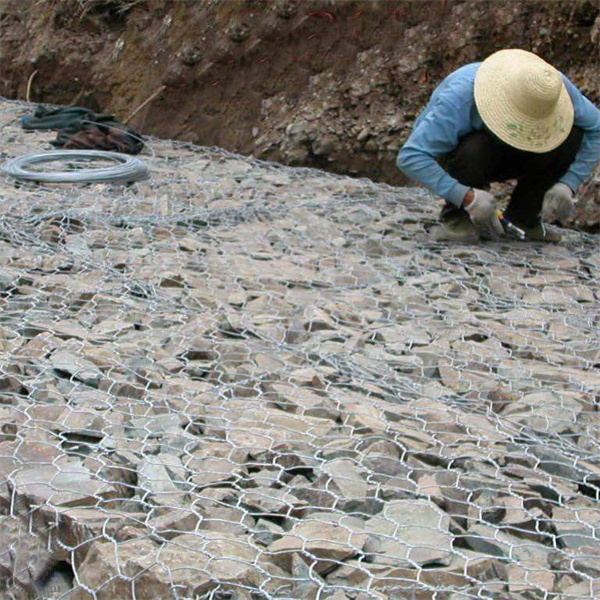Août . 01, 2024 02:11 Back to list
Top Features of the Best Gabion Retaining Walls for Your Residential Landscape Design
The Best Gabion Retaining Walls for Residential Use
In the realm of landscaping and home improvement, retaining walls play a vital role in managing soil erosion, creating terraced gardens, and providing structural stability. Among various materials and designs available, gabion retaining walls stand out due to their durability, aesthetic appeal, and sustainability. Understanding the advantages and best practices for installing gabion retaining walls can enhance your residential landscape, making it both functional and beautiful.
What is a Gabion Retaining Wall?
A gabion is a wire container filled with stones, rocks, or other durable materials, and these containers are stacked to form a wall. The use of gabions dates back to ancient times, but modern engineering has refined their design and functionality. Gabion retaining walls are effective in preventing soil erosion while allowing for water drainage, which minimizes pressure buildup behind the wall. This feature is particularly important in residential areas where heavy rains can lead to flooding and soil instability.
Advantages of Gabion Retaining Walls
1. Durability Gabion walls are highly resilient to natural elements. The steel wire cages prevent the stones from shifting, ensuring that the structure remains intact over time, even in harsh weather conditions.
2. Aesthetic Appeal With a variety of stones and materials available, gabion walls can be customized to enhance the aesthetic of any garden or yard. The natural look of stones blends seamlessly with landscaping, making it a popular choice for modern residential designs.
3. Eco-Friendly Gabions promote sustainability. They can be filled with local stone, making them an environmentally friendly option. Additionally, their design encourages vegetation growth, which can further aid in erosion control and enhance biodiversity.
4. Versatility Gabion walls can be used in various residential settings. They can function as retaining walls, privacy screens, garden borders, or even decorative architectural elements. This versatility allows homeowners to use them creatively in their landscaping projects.
5. Cost-Effective Compared to traditional concrete or brick retaining walls, gabions are often more cost-effective. The materials used are generally less expensive, and the ease of installation can significantly reduce labor costs.
best gabion retaining wall residential

Installing Gabion Retaining Walls
When considering a gabion retaining wall for your home, proper installation is crucial. Here are some best practices
1. Planning Assess the area where the wall will be installed. Consider the height, length, and location of the wall to ensure it meets your needs. It's essential to check local regulations regarding wall height and materials.
2. Foundation A strong foundation is key to the stability of a gabion wall. Dig a trench that is deep enough to support the structure and ensure it is level. The trench should be filled with compacted gravel to improve drainage.
3. Cage Assembly After preparing the foundation, assemble the gabion cages. Make sure to secure them properly to withstand pressure and prevent deformity.
4. Filling Fill the cages with stones. It's important to use appropriately sized stones to avoid gaps that could lead to the erosion of soil behind the wall.
5. Layering If your wall will be taller than a few feet, consider using a staggered layering approach to enhance stability. This method adds strength to the structure and better distributes pressure.
Conclusion
Gabion retaining walls offer an efficient, aesthetically pleasing, and environmentally friendly solution for residential landscaping needs. By understanding their benefits and following best installation practices, homeowners can create durable, effective retaining structures that enhance their outdoor spaces for years to come. Whether you are looking to control erosion, create unique garden features, or simply improve your property’s visual appeal, gabion walls are an excellent option to consider.
-
Why PVC Coated Gabion Mattress Is the Best Solution for Long-Term Erosion Control
NewsMay.23,2025
-
Gabion Wire Mesh: The Reinforced Solution for Modern Construction and Landscape Design
NewsMay.23,2025
-
Gabion Wall: The Flexible, Seismic-Resistant Solution for Modern Landscaping and Construction
NewsMay.23,2025
-
Gabion Wall Solutions: The Durable, Decorative, and Affordable Choice for Every Landscape
NewsMay.23,2025
-
Gabion Basket: The Durable and Flexible Alternative to Traditional Retaining Walls
NewsMay.23,2025
-
Gabion Basket: The Proven Solution for Slope Stability and Flood Control
NewsMay.23,2025
-
Versatility of Chain Link Fence Gabion
NewsMay.13,2025






